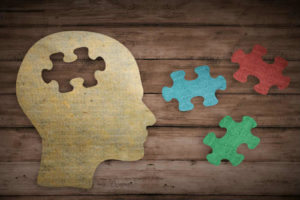











Object relations theory refers to a theoretical orientation that is used by therapists who are trained using psychoanalytic theory as a foundation. This theory asserts that our experiences early on in life with objects, including people and things, subconsciously form relationships with those objects, impacting our thoughts and standards throughout our lives as adults.

Object relations theories are a family of approaches that focus on how early relationships shape our internal world. Object relations theory grew out of early psychoanalytic ideas, expanding on the importance of internalized experiences and early childhood relationships.
Mental health professionals use a variety of techniques when working to help people improve their emotional health. Depending on where and how they were trained, therapists will use various models of therapy that work on addressing a person’s issues from different perspectives to provide them with relief. Object relations is one particular model. Psychoanalytic therapists work to help a person uncover their conscious and unconscious thoughts and feelings to help people unlock possible repressed fears and conflicts that may be contributing to their distress. Ego psychology is another school within psychoanalysis that has contributed to understanding self-representations and the development of the ego.
Therapists applying the object relations model believe that negative experiences in childhood contribute to a person repressing certain feelings and that this repression can also cause people to engage in certain maladaptive ways of thinking and behaving. Psychoanalytic therapists believe that this is an unintentional response meant to protect the patient from feeling pain or distress. The patient is typically unaware of how painful past experiences are affecting their current thoughts and relationships. In contrast to Freudian drive theory, which emphasized biological drives and sexual urges as primary motivators, object relations theories focus more on the impact of early relationships and internalized mental representations.
Psychotherapy based on object relations theory takes the fundamental principles of psychoanalysis and uses them to provide a treatment model that helps a person identify how their innermost thoughts about themselves may be impacting their relationships, or vice versa. One of the central concepts of object relations theory is the distinction between the true self and false self; inadequate early care can lead to the development of a false self that conforms to external expectations, while healthy relationships foster the emergence of the true self.
Object relations theory takes the fundamental principles of psychoanalysis and uses them to provide a treatment model that helps a person identify how their innermost thoughts about themselves may be impacting their relationships, or vice versa.
Using object relations theory, therapists help people identify patterns in their lives that may be impacting their relationships with others. Therapists refer to significant others in a person’s life, particularly a person’s primary caregiver (mother, father, etc.), as the object in object relations theory. The primary object, often the mother or caregiver, serves as a foundational element in the formation of self-identity and attachment. The concept of the maternal object is central here, as the maternal object—such as a caregiver or nurturing figure—provides essential emotional support and shapes the child’s sense of self.
The focus of this kind of treatment centers around early attachment relationships between a person and their caregivers during infancy, as therapists believe that the relationship that a person has with their caregivers during infancy can help shape their personality and the way they interact in interpersonal relationships throughout their lives. In early development, the mother’s breast is often considered the primary object, and infants may split the mother’s breast into good and bad parts, forming early internal images that influence later emotional regulation and attachment.
An object relations therapist will help a person begin to understand how they, during infancy, thought about themselves, about the object or caregiver, and the relationship between the two of them. Therapists will introduce the idea of representations, or the way a person perceives themselves and their relationships with others. These representations include both self-representation and object representation, which are formed through early experiences and internalized relationships. For example, a person may have the following representations about their relationship with their mother:
Object relations units are considered the building blocks of these internalized relationships, with each object relation comprising self and object representations and the affective experiences that connect them. The differentiation between self and object is a crucial developmental process, and children internalize these early patterns of relating to significant objects, which become memory traces and internal images that influence ongoing relationships throughout life.
An object relations therapist will help a person begin to uncover the representations they have about their early-life caregivers, and how these relationships may have shaped the way they feel about themselves and their relationships with others. These internalized relationships, formed through early interactions, create enduring object relations units and object constancy, which is the developmental milestone where a child recognizes that objects, including caregivers, remain consistent despite changes in perception.
In addition to this, therapists help people begin to understand the term “splitting.” This describes how a person may have, during infancy, been unable to understand the complexity of their parents initially, causing them to see others (and eventually themselves) as all good or all bad, with no room for both. The paranoid schizoid position, as described in Klein’s theory, is an early developmental stage characterized by splitting, projective identification, and defensive mechanisms to manage anxiety.
Over time, a child may be able to blend these perceptions of their parents and ultimately other people that they are in relationships with, if their experience with their mother (or another primary caregiver) was “good enough.” The depressive positions represent a later developmental stage where the child integrates good and bad aspects of the object, leading to healthier object relations and less splitting.
If they saw their primary caregiver as having more positive and supportive qualities than negative, they may be able to make that shift to have less of a split perception of them. If, however, they don’t perceive their primary caregiver as “good enough,’ they can continue to engage in splitting in this and other relationships, and struggle to see the gray in their world of black and white. Achieving object constancy is a key developmental milestone that allows for the integration of good and bad perceptions into a stable internal representation.
Therapists believe that splitting is often a defense mechanism that creates instability in relationships because a person may struggle to see those closest to them as complex figures who are a combination of “good” and “bad” qualities, instead seeing them as good only when they are doing good and bad when they are doing something that the person perceives to be “bad.” Mental separation, the differentiation between inner and outer reality, and processes like projective identification and splitting are key concepts in object relations theory, helping to explain how individuals manage conflicting feelings and develop emotional regulation.
This “all or nothing” mentality is theorized to lead to conflictual relationships as evidenced by mood swings, threatening behavior, and struggles with healthy conflict resolution. This is just one of the focus points that an object relations therapist will use to help a person develop insight into some patterns that may have resulted from deep feelings in infancy, and having this awareness can often help a person begin to make changes in their behavior.
Meeting all the infant’s needs is crucial for healthy psychological development, as unmet needs can lead to defensive mechanisms like splitting. Early dependency on caregivers, or infantile dependence, can create anxiety and later psychological issues if conflicts around dependency are not resolved. Klein believed that ego formation and early development are rooted in the child’s interactions with part-objects, such as the mother’s breast, and her theory emphasizes the importance of unconscious fantasy, internalized objects, and developmental positions in shaping the psyche.
Object relations theory, a cornerstone of psychoanalytic theory, centers on how our relationships with significant others—especially in early life—shape our inner world and influence our adult relationships. At the heart of relations theory are the concepts of internal objects and external objects. Internal objects are the mental representations we carry within us, formed from our earliest interactions with caregivers and significant others. These internal objects are not just memories; they are dynamic mental images that influence how we perceive ourselves and others throughout life.
External objects, on the other hand, are the actual people, things, or even inanimate entities in our environment. The interplay between internal and external objects is crucial: through the process of introjection, we internalize qualities and characteristics of external objects, such as a nurturing or critical parent. Conversely, through projection, we may attribute our own feelings or desires to an external object, shaping our interactions and expectations.
Object relations theory emphasizes that these mental representations, or object representations, are formed in the context of early relationships, most notably with the primary caregiver. These early experiences become the blueprint for how we relate to others, our sense of self, and our ability to form healthy, meaningful connections. Understanding the distinction between internal and external objects, and how they interact, is essential for grasping how object relations theory explains human behavior, emotional development, and the complexities of interpersonal relationships.
Early relationships are the foundation upon which our inner object world is built. In object relations theory, the primary caregiver—often the mother—is considered the first and most influential external object in an infant’s life. As the child begins to interact with this caregiver, these experiences are internalized, forming the first internal object representations that will shape the child’s sense of self and their approach to future relationships.
A nurturing, responsive primary caregiver helps the child develop a secure sense of self and trust in others, laying the groundwork for healthy object relationships and emotional resilience. When the caregiver consistently meets the infant’s needs, the child internalizes a sense of safety and worth, which becomes a stable part of their internal object world. However, if the caregiver is neglectful, inconsistent, or abusive, the child may internalize anxiety, mistrust, or feelings of unworthiness. These early disruptions can contribute to the development of personality disorders, such as borderline personality disorder, and ongoing struggles with mental health.
Object relations theorists like Melanie Klein have highlighted how these early relationships are not just important—they are central to the formation of the self and the ability to form healthy, adaptive relationships in adult life. The quality of these early bonds influences how we perceive ourselves, how we relate to significant others, and how we navigate the challenges of the external world.
The depressive position is a pivotal concept in object relations theory, introduced by Melanie Klein, that marks a significant stage in emotional development. This stage emerges as the child matures and begins to integrate their internal objects, moving from seeing people as all good or all bad (splitting) to recognizing that the same object—such as the mother—can possess both positive and negative qualities. This realization is the foundation of whole object relations, where the child can hold a more balanced and realistic view of themselves and others.
Entering the depressive position brings with it a sense of loss and mourning, as the child becomes aware that their internal objects are not perfect and that their own actions can cause harm to those they love. This awareness leads to feelings of responsibility, concern, and sometimes unconscious guilt, but it also opens the door to making reparations and building more authentic, caring relationships. The depressive position is essential for the development of a coherent sense of self and identity, as it allows for the integration of conflicting feelings and the acceptance of complexity in both self and others.
Object relations theorists view the depressive position as a necessary step in normal development, enabling individuals to move beyond primitive defenses and develop mature, stable object relationships. Achieving this stage supports mental health, emotional growth, and the capacity for empathy and genuine connection in adult relationships.
The key to object relations therapy is to help a person begin to develop insight into problematic patterns in their interpersonal life and to help them better understand these issues and how to improve them. In addition to developing insight, the therapeutic relationship serves as a safe, transitional space for exploring and changing internalized object relations, which is central to fostering psychological change. Helping shed light on how very early attachment-related concepts may have impacted their ability to function in their current relationships can help a person understand themselves and others in a whole new way, and can lead to the development of a more realistic way of seeing their present situations.
This can alleviate a lot of pain and suffering. Therapists work to help people recognize how they may have used splitting to develop representations of themselves or others that create conflict and distrust in their current relationships. The therapeutic process can also serve as a focal point for organizing new, healthier self and object representations. They can also help a person begin to identify the “shades of gray” in themselves and others to help them have more meaningful connections with other people and to feel better about themselves.
Object relations is a psychological theory that deals with helping a person safely uncover deeply repressed psychological patterns, which can be difficult for many people to be motivated to do, or to tolerate. These patterns are rooted in the functioning of the human brain and the ongoing processes of mental life, involving both conscious and non-conscious psychological experiences. This type of therapy has been successful in the treatment of addictions, personality disorders, and other cases where a person may be craving insight into how their past is shaping their future.
It is also used in family therapy and couples counseling to help people begin to develop healthier patterns in their interpersonal relationships. This therapy is mostly used with adults, as children and teens may not have enough psychosocial maturity to begin to understand the deep processes of their representations of objects or people in their lives, let alone the way they perceive themselves. While this treatment has less research done on its effectiveness, it is based on a theory that has been devised by early psychological historians and does provide some people with the support they need to identify patterns in their lives and make lasting changes. Object relations therapy is also informed by psychodynamic thinking, which emphasizes the role of unconscious processes and early relationships.
If you are someone who with patterns of feeling stuck in your relationships or has a history of highly conflictual relationships, mood swings, and addiction-related symptoms, a psychoanalytic approach like object relations could help you uncover some of the deep messages you have about yourself and others.
These messages could then be changed to improve these parts of your life. Object relations work involves developing real trust and rapport with your therapist so that you can feel comfortable exploring and uncovering painful thoughts and feelings that began very early on in your life. An object relations therapist will be supportive and empathetic, but will also challenge you to rethink patterns that may not be useful or healthy in your life.
Sources